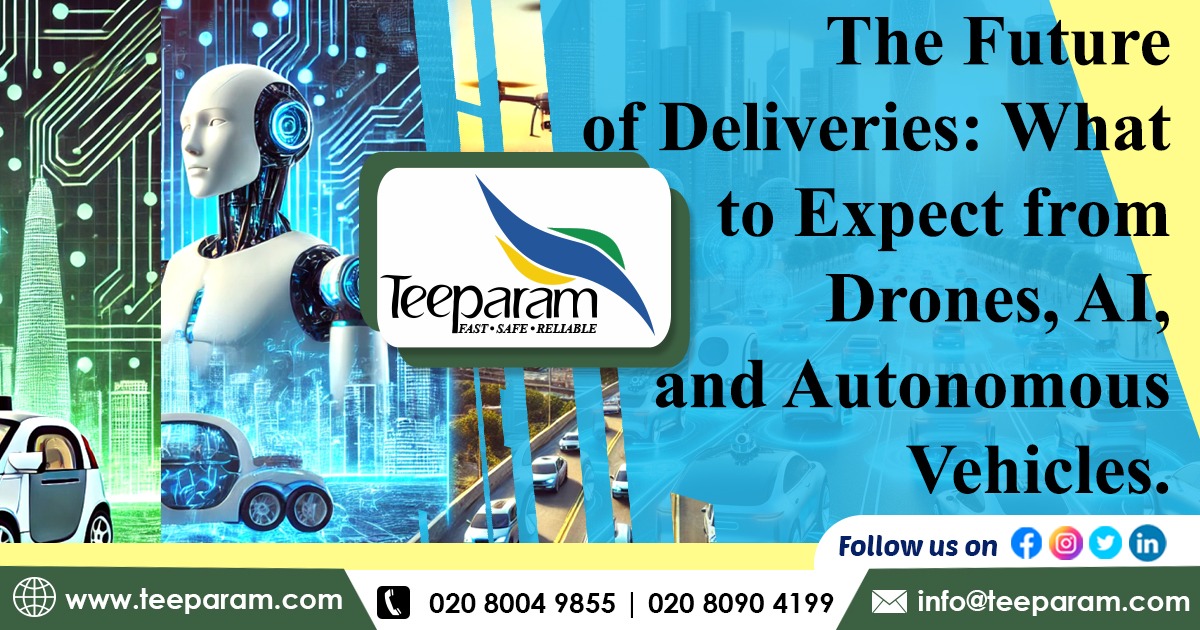To become successful in business, logistics need to be at the heart of it. The supply of goods enhances productivity, improves customer satisfaction, and boosts growth. To become more competitive, businesses need to deliver their products faster and more efficiently. On the other hand, customer expectations keep rising—particularly around same-day delivery and free shipping, putting the logistics industry under pressure to transform.
Here’s where technology comes into play. Innovations are transforming the way goods are transported from warehouses to customers’ doorsteps, including delivery robots, drones, and driverless cars. These tools, which are powered by AI, machine learning, cloud computing, and 5G, are becoming normal rather than merely futuristic ideas. What does the future hold for deliveries, then?
Self-Driving Vehicles: Revolutionizing Road Delivery
Unquestionably, self-driving trucks and cars have had a significant impact on logistics and have been in the news for years. The goals of autonomous vehicles (AVs) are to decrease human error, save money, and improve delivery effectiveness.
What Are They Able to Do?
Delivery of the Last Mile
The final portion of a product’s journey, from the transportation hub to the customer’s door, is referred to as the “last mile.” AVs are working especially well in this field. Before moving on to longer routes, businesses can test navigation systems, safety, and efficiency on short-distance trips.
Long-Haul Transportation
AVs aren’t limited to short journeys. Autonomous trucks have demonstrated their potential for long-distance freight delivery successfully in the United States.
Warehouse Activity
AVs are changing warehouses in addition to roadways. Operations within fulfillment centers are becoming more efficient thanks to autonomous forklifts, picking machines, and scanning vehicles.
Autonomous Vehicle Benefits
Cost Savings: AVs reduce labor and fuel costs by reducing the need for human drivers and frequently using electric power.
Increased Efficiency: AVs never tire. They minimize accidents, cut down on traffic-related delays, and optimize routes.
Eco-Friendly: Since the majority of AVs are electric, they help achieve sustainability objectives and lower carbon emissions.
Improved Customer Experience: Customers benefit from real-time updates and quicker delivery times thanks to sophisticated tracking.
Deliveries from the Air: Making use of Drones
Unmanned aerial vehicles (UAVs), commonly referred to as drones, are becoming one of the most innovative last-mile logistics tools. Drones are compact, light, and effective; they deliver goods more quickly by completely avoiding traffic.
How are Drones Used?
Delivery of Smaller Packages to the Final Mile
Drones are excellent for short-distance, lightweight package transportation. Due to payload and battery limitations, they aren’t yet suitable for long trips or heavy loads, but they are perfect for carrying food, small consumer goods, or emergency medical supplies.
Warehouse Inventory and Picking
Drones with cameras and scanners can scan barcodes on high shelves, move through warehouse aisles, and send data straight to systems. As a result, the usage of heavy equipment is not much required.
Monitoring and Safety
Drones not only make deliveries but also keep an eye out for illegal activity in warehouses and other facilities. They send out real-time alerts and serve as mobile surveillance systems.
Advantages of Deliveries by Drone
Increased Access: Unlike traditional vehicles, drones can reach remote or difficult-to-reach locations.
Speed: Drones cut down on delivery times by avoiding traffic by taking direct routes.
Cost Reduction: They cut labor costs, fuel consumption, and fleet expenses.
Accuracy: By reducing the number of unsuccessful deliveries, AI and navigation systems increase customer confidence and save money.
Sustainability: Drones that run on batteries are environmentally friendly because they don’t release greenhouse gases into the atmosphere.
Robots: Progressing Toward the Future
Delivery robots travel city streets and sidewalks while drones fly through the air. Small robots and walk-fast are already being used to deliver packages and food in American cities.
Present and Future Uses
E-commerce Deliveries: Robots frequently use secure compartments that can be unlocked with an app to deliver small packages to customers’ doors.
Warehouse Operations: Robots are useful for growing e-commerce businesses because they assist with vehicle loading and unloading as well as product sorting.
Delivery robots will get smarter as AI and machine learning advance; they will learn from previous journeys, optimize routes, and navigate urban areas more effectively. They might become an everyday feature of urban logistics with the correct infrastructure.
The Technology That Supports These Advancements
Without advanced technology, none of this would be feasible. Let’s break down the backbone of these solutions:
Machine learning and artificial intelligence (AI): Help vehicles identify obstacles, plan the best routes, and get better over time.
LIDAR & Sensors: By identifying pedestrians, traffic laws, and possible dangers, LIDAR and sensors enable safe navigation.
GPS: Accurate arrivals are guaranteed by high-precision mapping.
Cloud Computing: The enormous volume of data that these vehicles gather is managed by cloud computing, which enables real-time route modifications.
5G Connectivity: Allows for smooth, low-latency communication between customers, warehouses, and automobiles.
When combined, these technologies enable safe, dependable, and scalable autonomous delivery.
Obstacles to overcome
Despite the vast potential, there are still certain obstacles to overcome:
Regulations: Drone airspace regulations and AV traffic laws differ greatly between nations.
Battery Limitations: More powerful battery technology is needed for longer ranges.
Payload Capacity: In order to scale efficiently, drones and robots need to be able to carry larger loads.
Infrastructure: To accommodate these innovations, cities must modify their sidewalks, streets, and warehouses.
Drones, autonomous vehicles, and delivery robots are paving the way for a new era of sustainability and efficiency in logistics. We can predict that these technologies will influence every aspect of our lives as battery life increases, artificial intelligence advances, and regulations change. Imagine having a robot deliver your online purchases to your door or having a drone deliver your pizza order—all while knowing that the process is effective and environmentally friendly.
The delivery sector is about to change. Drones, robots, and autonomous vehicles are no longer sci-fi concepts; rather, they are workable solutions that are revolutionizing last-mile logistics. With the help of AI, 5G, and cloud computing, they promise delivery systems that are quicker, greener, and more economical.



